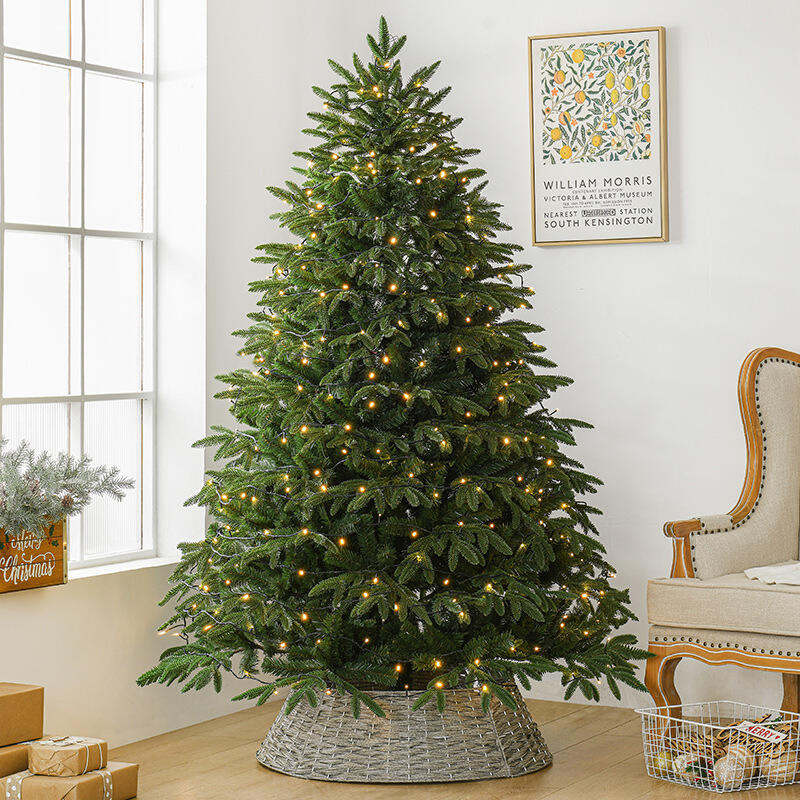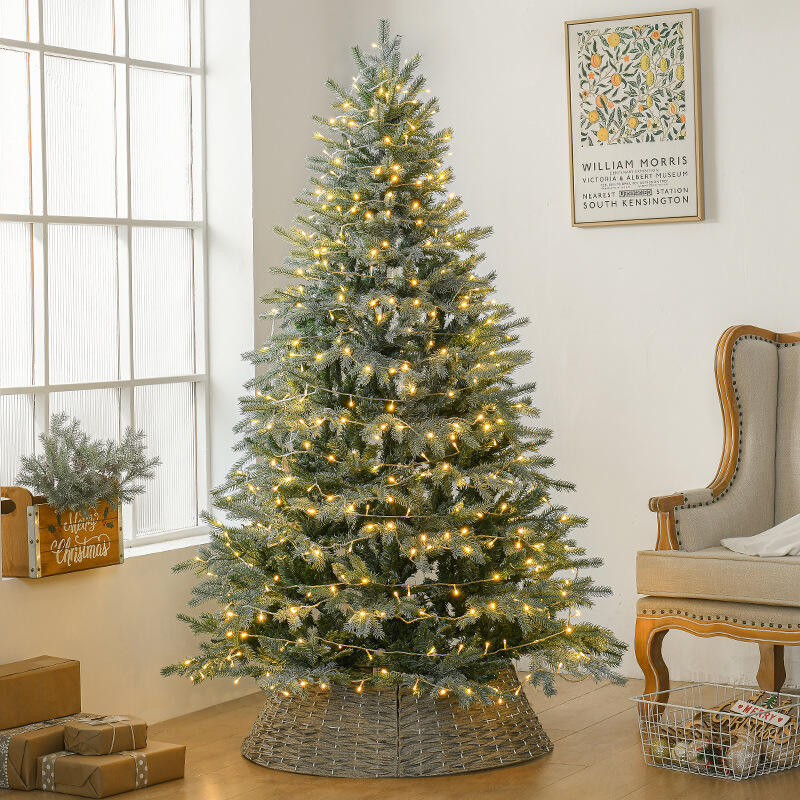Fire Safety with Christmas Trees: How to Avoid Holiday Hazards?
Introduction to Christmas Tree Safety
The holiday season is a time of joy, celebration, and tradition, with Christmas Trees serving as the centerpiece in many homes and public spaces. They bring warmth, festive spirit, and decorative charm, but they also present potential fire hazards if not properly handled. Fire incidents involving Christmas Trees are more common than many realize, and when they occur, the results can be devastating due to the rapid speed at which trees can ignite and spread flames. Understanding the risks and applying preventive measures is essential to keep celebrations safe and worry-free.
Why Christmas Trees Pose Fire Risks
Flammability of Trees
Both natural and artificial Christmas Trees can pose fire risks, though natural trees are particularly vulnerable when they dry out. A dry tree can ignite in seconds and burn intensely, turning an entire room into a dangerous environment. Artificial trees, while generally less flammable, may still contain materials that can contribute to fire spread if exposed to high heat or faulty electrical components.
Electrical Hazards
One of the most common fire hazards comes from electrical decorations. Holiday lights, extension cords, and overloaded outlets can produce sparks or overheating. When these are in contact with dry branches or flammable decorations, the potential for fire increases significantly.
Placement Issues
Where a Christmas Tree is placed also matters. Trees that are located near fireplaces, radiators, heating vents, or candles are at greater risk of catching fire. Even a small spark or excess heat can lead to ignition if precautions are not taken.
Choosing a Safer Christmas Tree
Freshness Matters
When selecting a natural tree, freshness is the key factor in fire safety. A fresh tree has green, flexible needles that do not fall off easily when touched. The trunk should be sticky with sap, which indicates it retains moisture. Dry, brittle needles suggest that the tree is already prone to fire hazards.

Artificial Tree Considerations
For those who prefer artificial Christmas Trees, choosing a tree labeled as fire-retardant is highly recommended. While not fireproof, these trees are treated to resist ignition, providing an added layer of safety. Consumers should also ensure the tree meets safety certifications and standards before purchasing.
Proper Setup and Placement
Safe Location
Christmas Trees should always be placed away from fireplaces, candles, heating systems, and direct sunlight. A minimum distance of three feet is advised to minimize exposure to heat sources. This safe distance significantly reduces the chance of accidental ignition.
Stable Base
A tree that tips over can bring lights and candles into contact with flammable surfaces. A sturdy, wide-based stand ensures that the tree remains upright throughout the holiday season. Watering the tree stand regularly also maintains stability and helps keep the tree hydrated.
Electrical and Lighting Safety
Quality Lighting Products
Only use lighting products that are UL-certified or tested for fire safety. Older lights with frayed wires, broken sockets, or loose connections should never be used, as they significantly increase fire risks.
Proper Usage
Avoid overloading electrical outlets or connecting multiple extension cords. Instead, distribute lighting across separate circuits when possible. Timers can also be used to automatically turn off lights when not needed, reducing unnecessary risks during the night or when the house is empty.
LED Advantage
LED lights produce less heat compared to traditional incandescent bulbs. By using LED lights on Christmas Trees, homeowners reduce the risk of heat buildup that can ignite branches or decorations.
Maintenance and Care of Natural Trees
Regular Watering
The most important step in keeping natural Christmas Trees safe is maintaining hydration. A tree can absorb several liters of water per day, especially in the first week after setup. Daily watering ensures the tree remains fresh, pliable, and less flammable.
Needle Checks
Regularly checking the condition of the needles helps determine if the tree is drying out. If needles fall off easily or become brittle, it is a sign that the tree is approaching unsafe conditions and may need to be removed earlier than planned.
Disposal After the Holidays
Keeping a dry tree indoors after the holidays increases fire risk. Once the season ends or the tree shows significant dryness, it should be removed from the house and disposed of through community recycling programs or waste collection services.
Fire-Safe Decorating Practices
Flame-Resistant Decorations
Whenever possible, choose decorations made of non-combustible or flame-resistant materials. Paper, untreated fabrics, and low-quality plastics can easily ignite if exposed to heat.
Candle Precautions
Candles should never be placed on or near Christmas Trees. If candles are used in the same room, they should be kept at a safe distance and never left unattended. Battery-operated LED candles provide a safe alternative for those who want the warm glow without the risk.
Child and Pet Safety
Children and pets can accidentally pull on cords or knock over decorations. Ensuring that decorations are securely fastened and cords are tucked away helps prevent accidents that could lead to fires.
Emergency Preparedness
Smoke Alarms
Functioning smoke alarms are the first line of defense against fire-related hazards. Ensure that alarms are installed in key areas of the home and tested regularly during the holiday season.
Fire Extinguishers
Having an accessible fire extinguisher near the room where the Christmas Tree is located provides peace of mind and an immediate response option in case of ignition.
Exit Plans
Families should have an evacuation plan in case of fire. Practicing this plan ensures that everyone knows how to exit the home quickly and safely during an emergency.
The Role of Public Awareness and Regulations
In many regions, fire departments and local governments issue guidelines on holiday safety. Public awareness campaigns highlight the risks associated with Christmas Trees and provide tips for safer decorating. Businesses and public spaces that use large Christmas Trees often follow stricter regulations, including the use of fire-retardant materials and professional installation of lights.
Conclusion
Christmas Trees bring joy, warmth, and tradition to homes, but they must be handled responsibly to avoid fire hazards. From choosing a fresh or fire-retardant tree to maintaining proper hydration, using safe electrical products, and avoiding open flames, simple steps go a long way toward preventing accidents. By combining personal responsibility with awareness of best practices, families can enjoy a festive holiday season without compromising safety. The Christmas Tree should be a symbol of joy, not a source of danger, and with the right precautions, it can remain a safe and beautiful centerpiece of celebration.
FAQ
Why are dry Christmas Trees so dangerous?
Dry trees ignite easily and burn rapidly, spreading flames throughout a room within minutes.
Are artificial Christmas Trees completely safe?
No, while fire-retardant artificial trees are safer, they are not completely fireproof and must still be kept away from heat sources.
How often should I water my Christmas Tree?
Daily watering is recommended to keep the tree hydrated and reduce flammability.
Can I use real candles on Christmas Trees?
No, real candles should never be used on or near trees due to the high fire risk.
What type of lights are safest for Christmas Trees?
LED lights are the safest choice because they generate less heat and reduce the chance of ignition.
How far should a Christmas Tree be from heat sources?
It should be placed at least three feet away from fireplaces, radiators, or heating vents.
When should I dispose of my Christmas Tree?
As soon as the needles become brittle or after the holiday season ends, the tree should be removed to prevent fire hazards.
Do smoke alarms help prevent Christmas Tree fires?
While they do not prevent fires, they provide early warnings that allow quicker response and evacuation.
Should I unplug Christmas Tree lights at night?
Yes, turning off or unplugging lights at night or when leaving the house reduces unnecessary fire risks.
What is the most important safety tip for Christmas Trees?
Keeping the tree hydrated, away from heat sources, and using safe electrical decorations are the most crucial safety measures.
Table of Contents
- Fire Safety with Christmas Trees: How to Avoid Holiday Hazards?
- Introduction to Christmas Tree Safety
- Why Christmas Trees Pose Fire Risks
- Choosing a Safer Christmas Tree
- Proper Setup and Placement
- Electrical and Lighting Safety
- Maintenance and Care of Natural Trees
- Fire-Safe Decorating Practices
- Emergency Preparedness
- The Role of Public Awareness and Regulations
- Conclusion
-
FAQ
- Why are dry Christmas Trees so dangerous?
- Are artificial Christmas Trees completely safe?
- How often should I water my Christmas Tree?
- Can I use real candles on Christmas Trees?
- What type of lights are safest for Christmas Trees?
- How far should a Christmas Tree be from heat sources?
- When should I dispose of my Christmas Tree?
- Do smoke alarms help prevent Christmas Tree fires?
- Should I unplug Christmas Tree lights at night?
- What is the most important safety tip for Christmas Trees?

